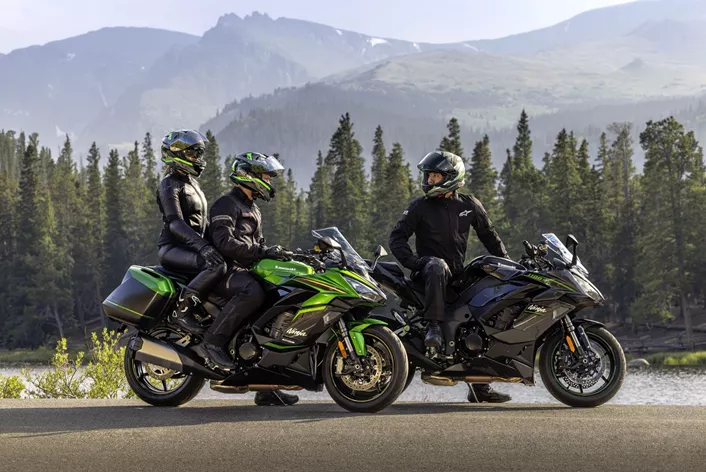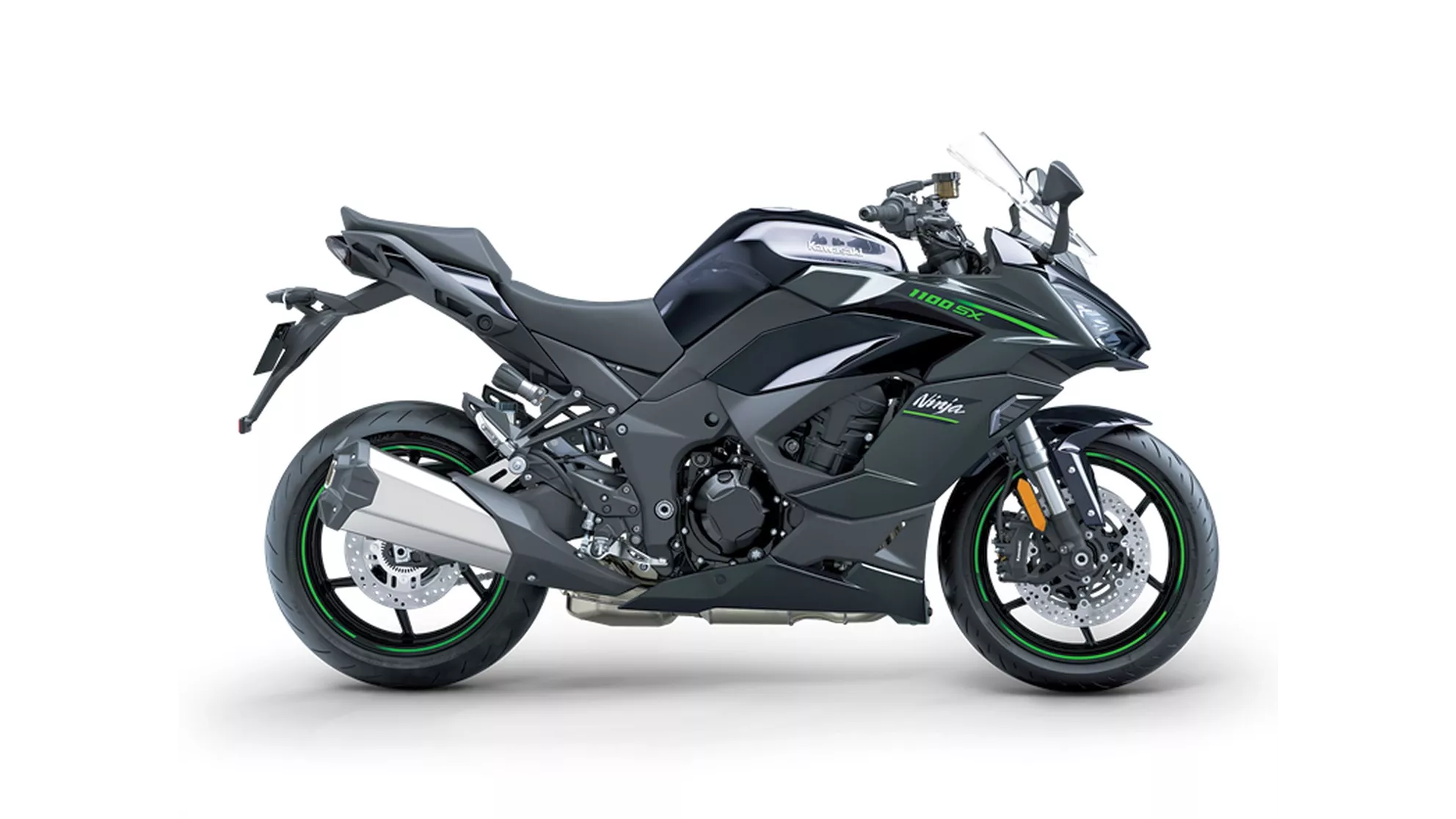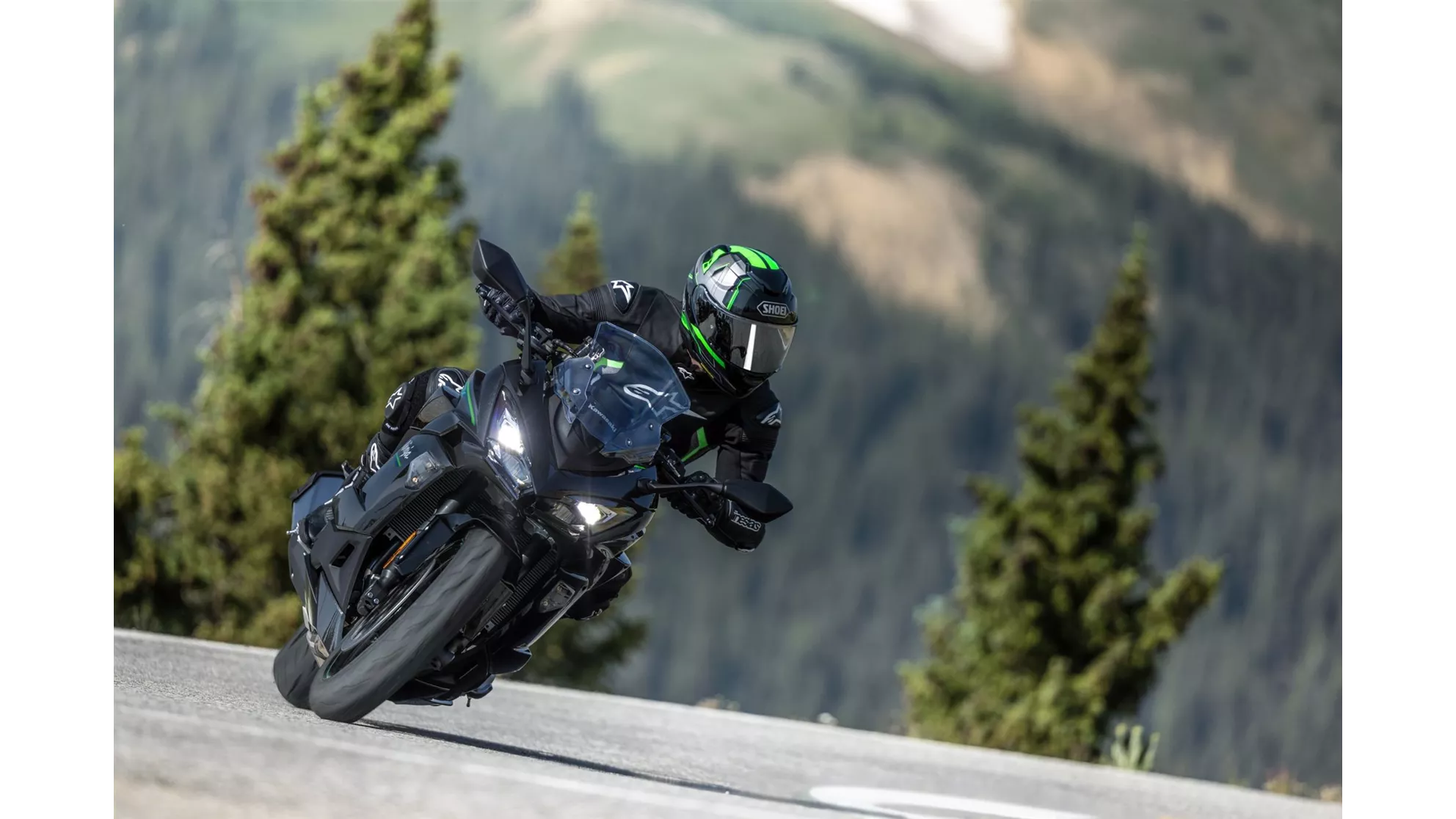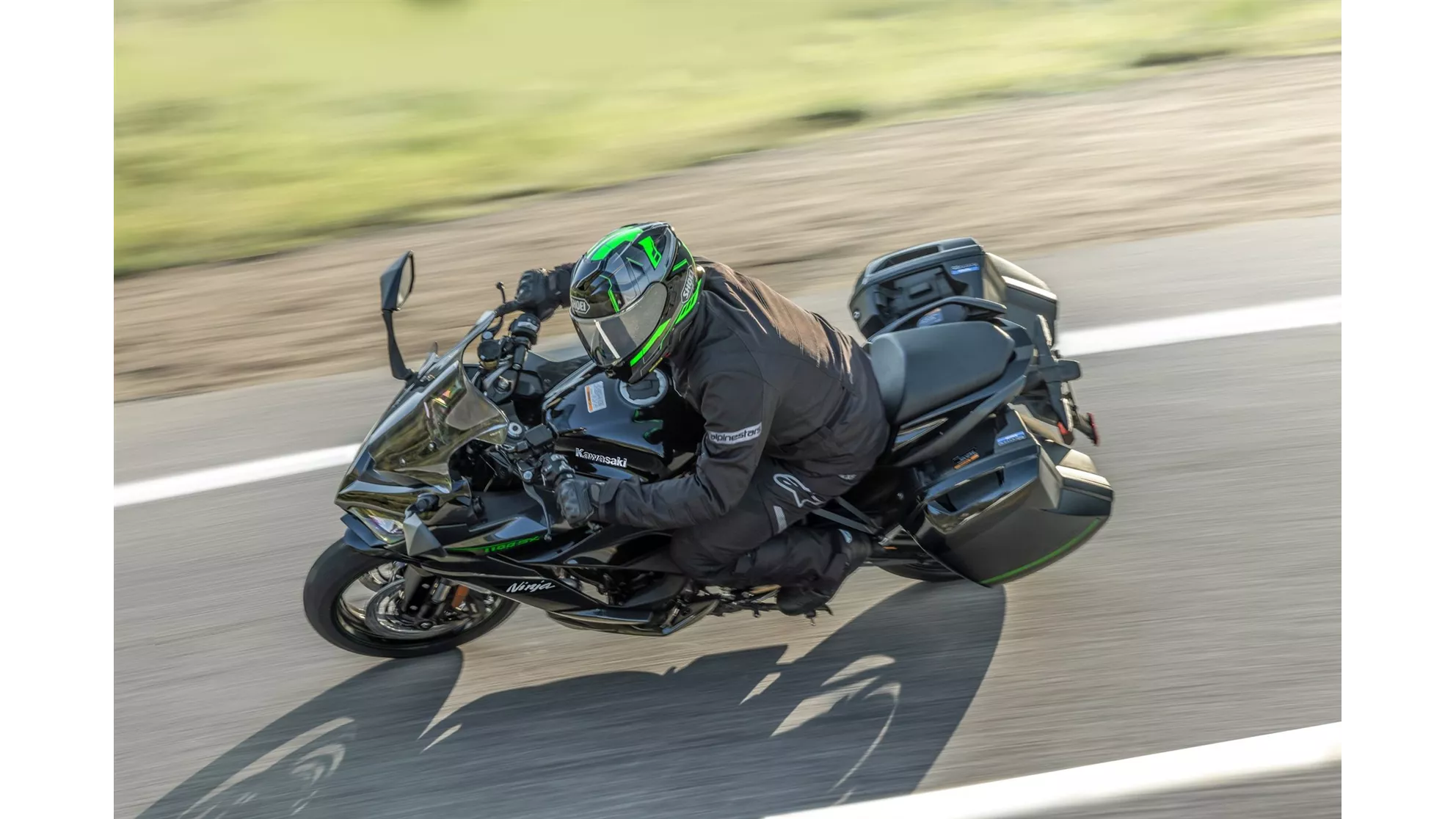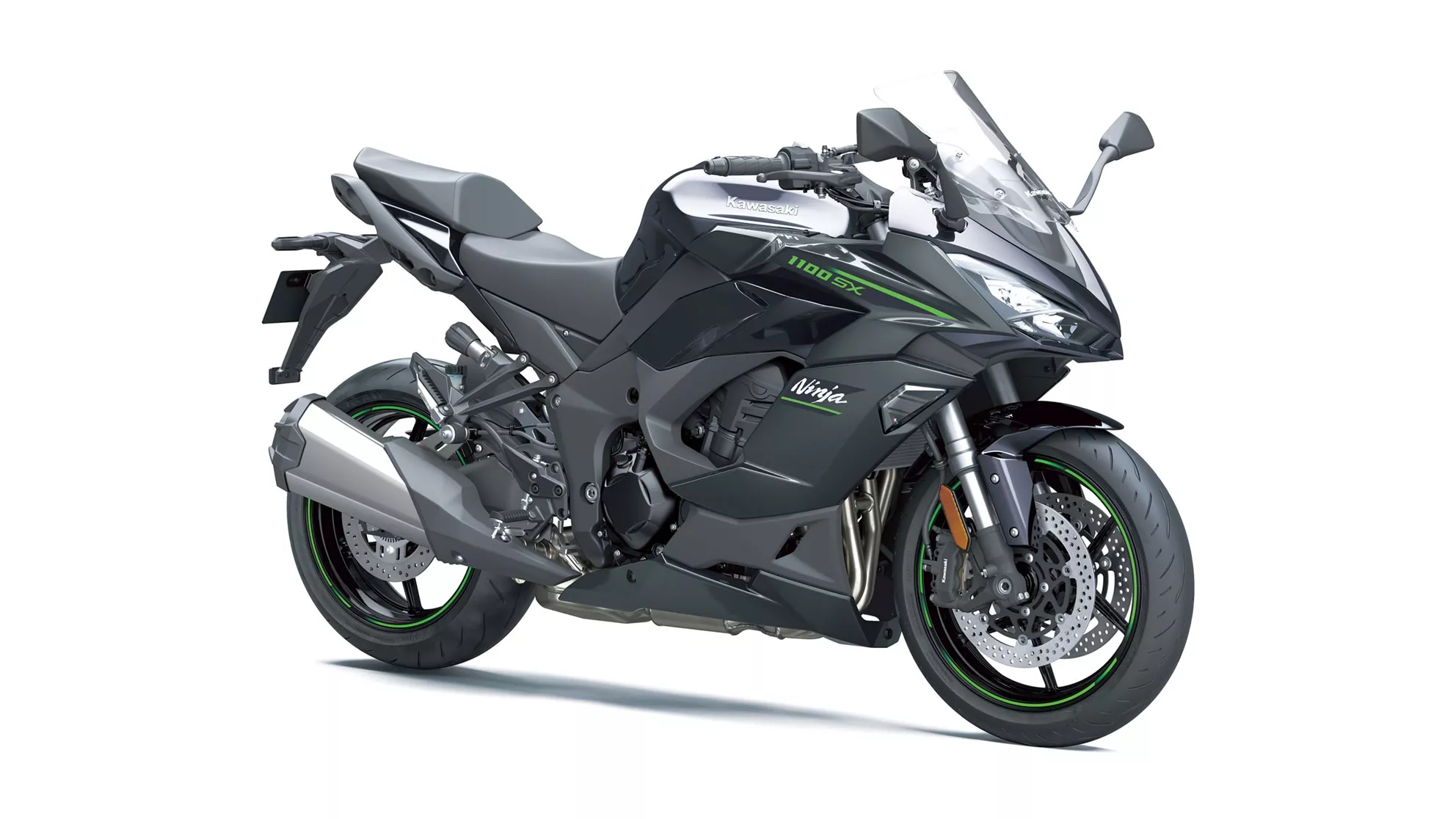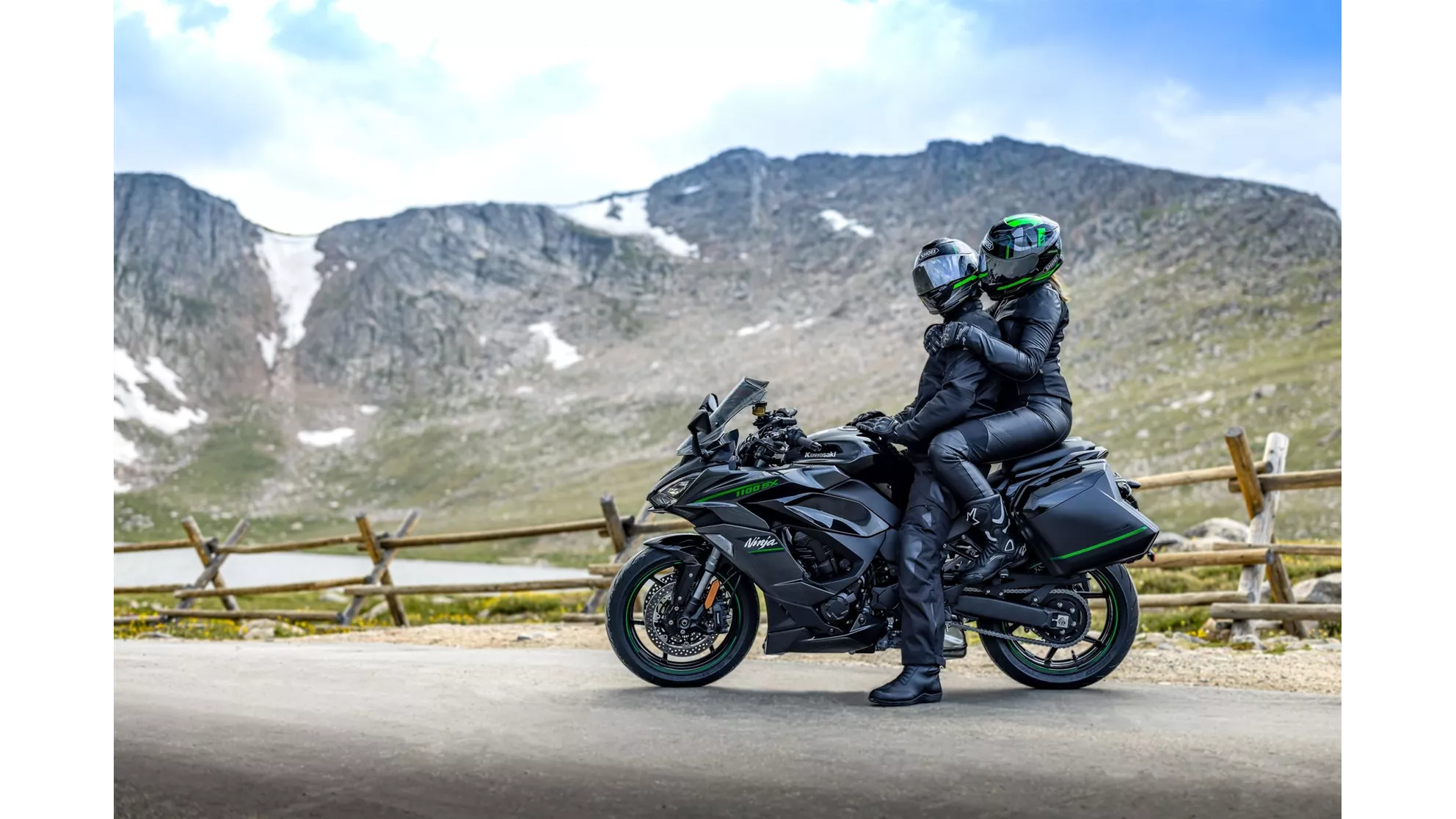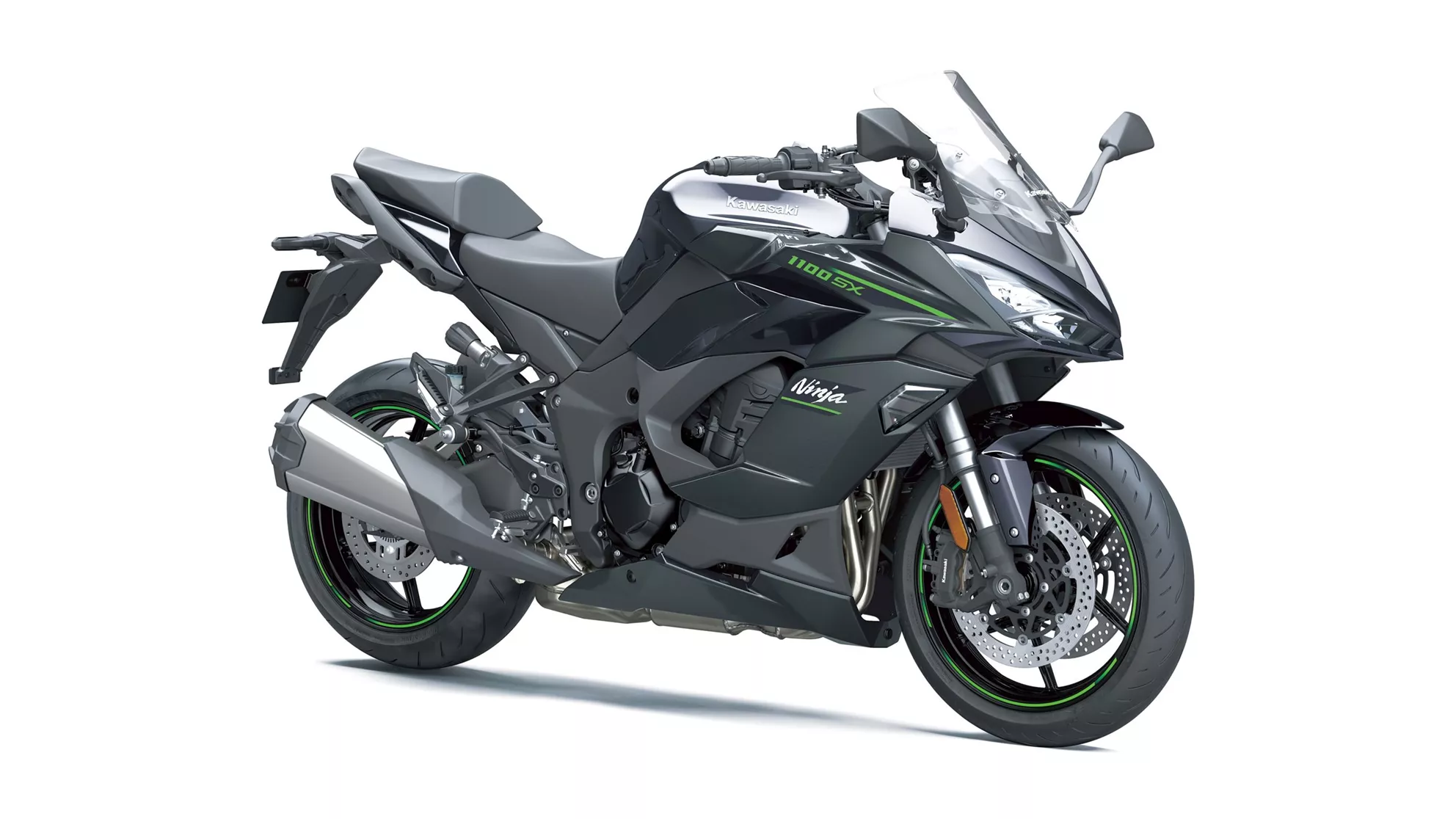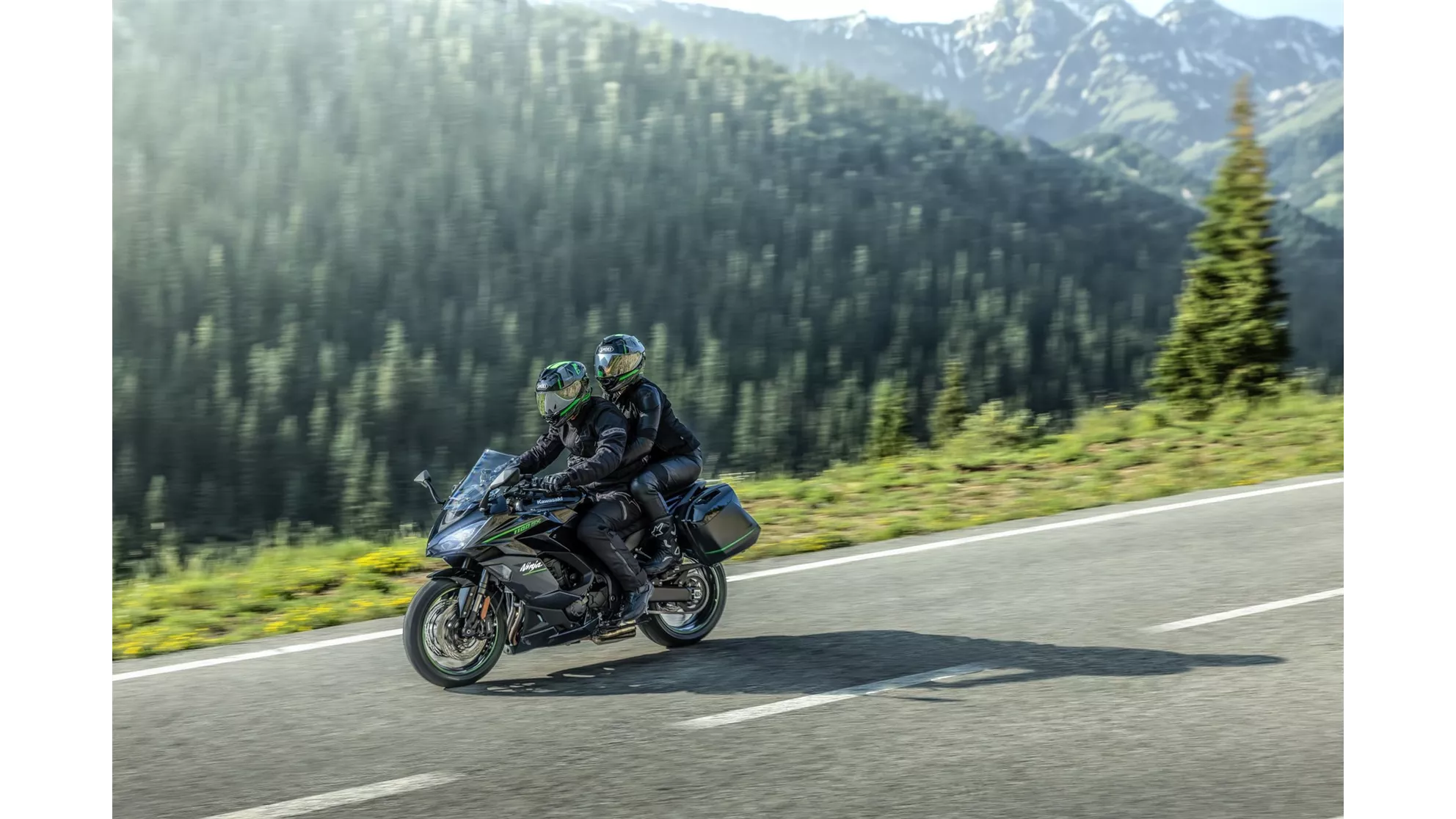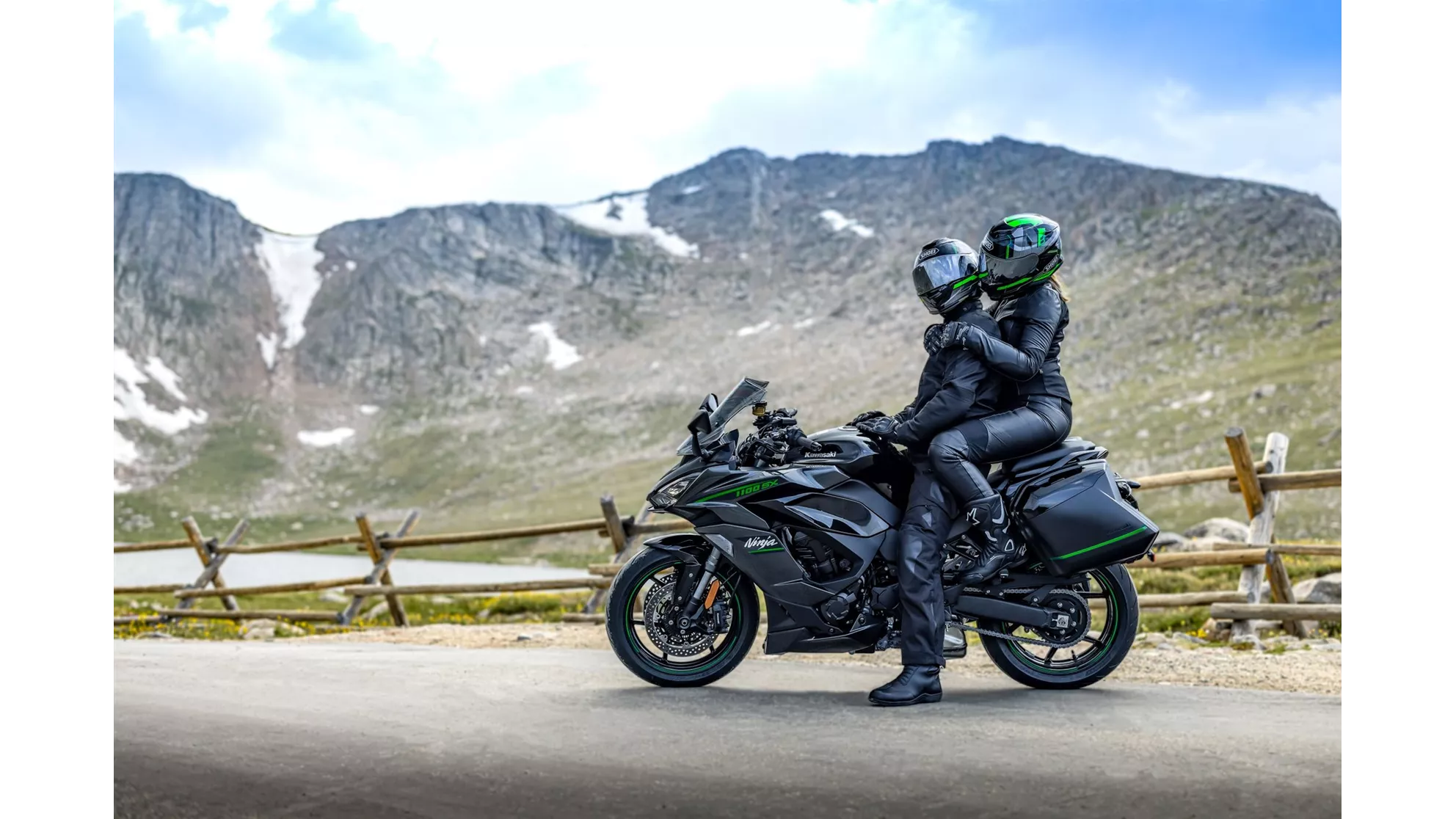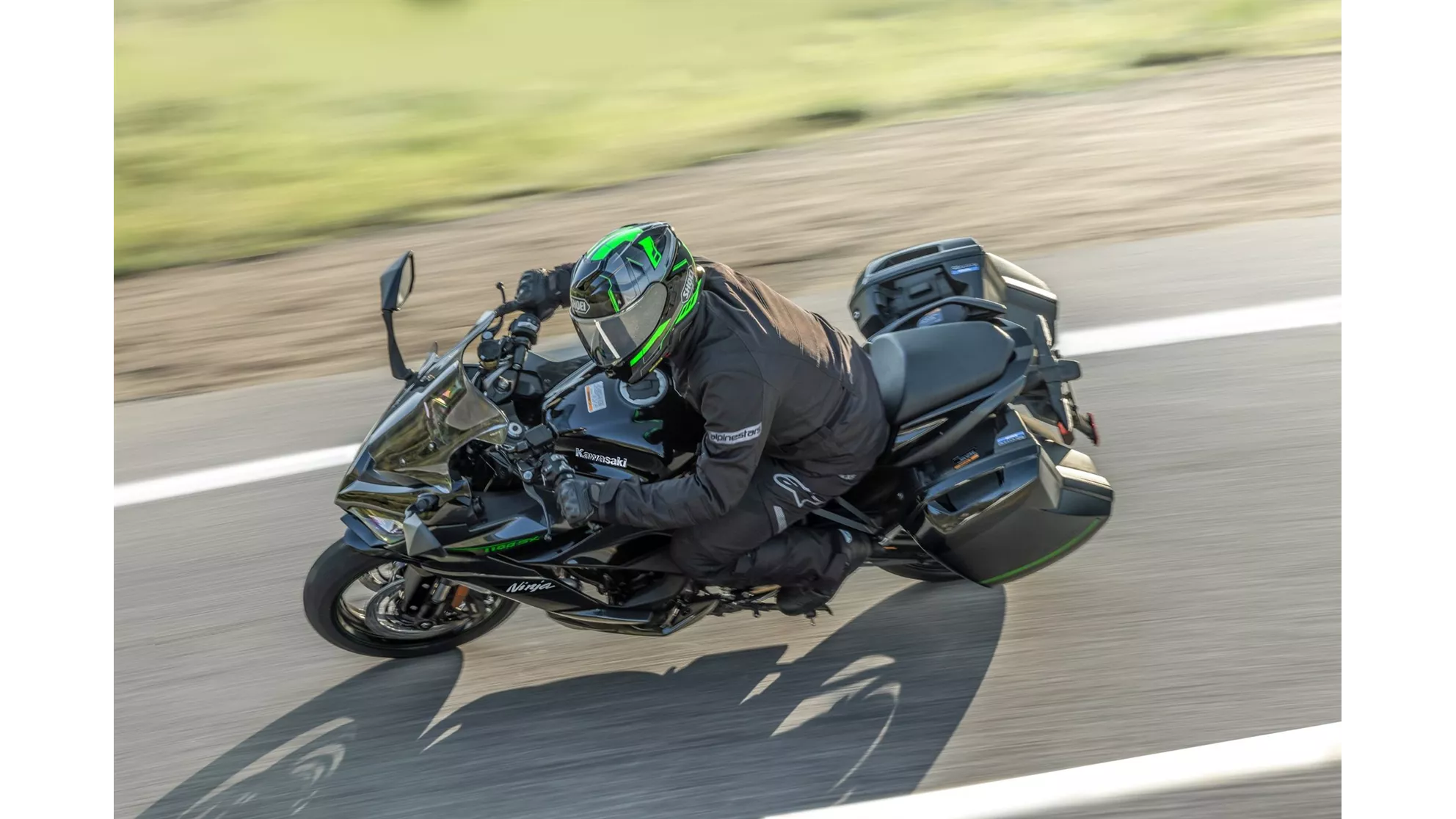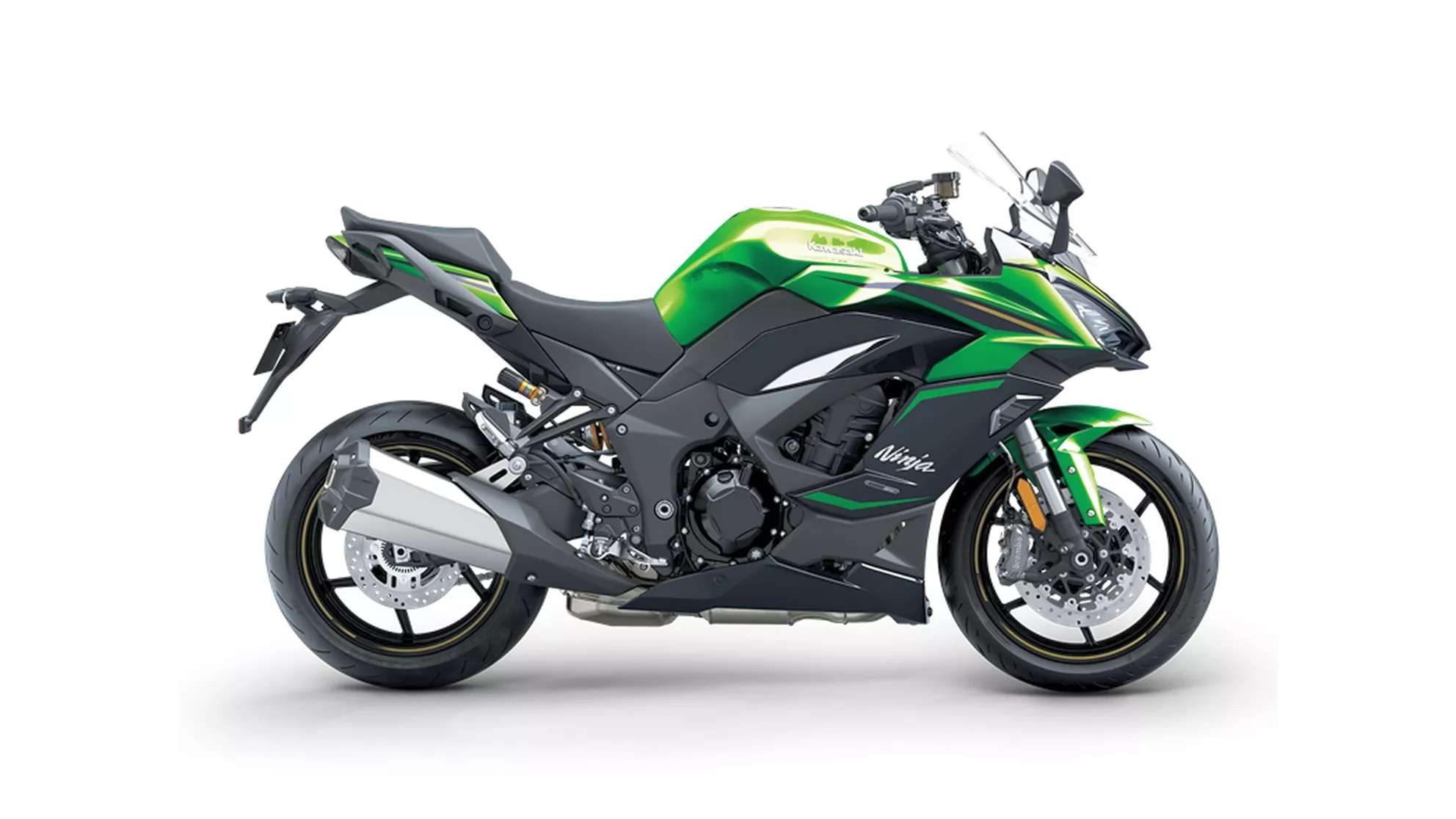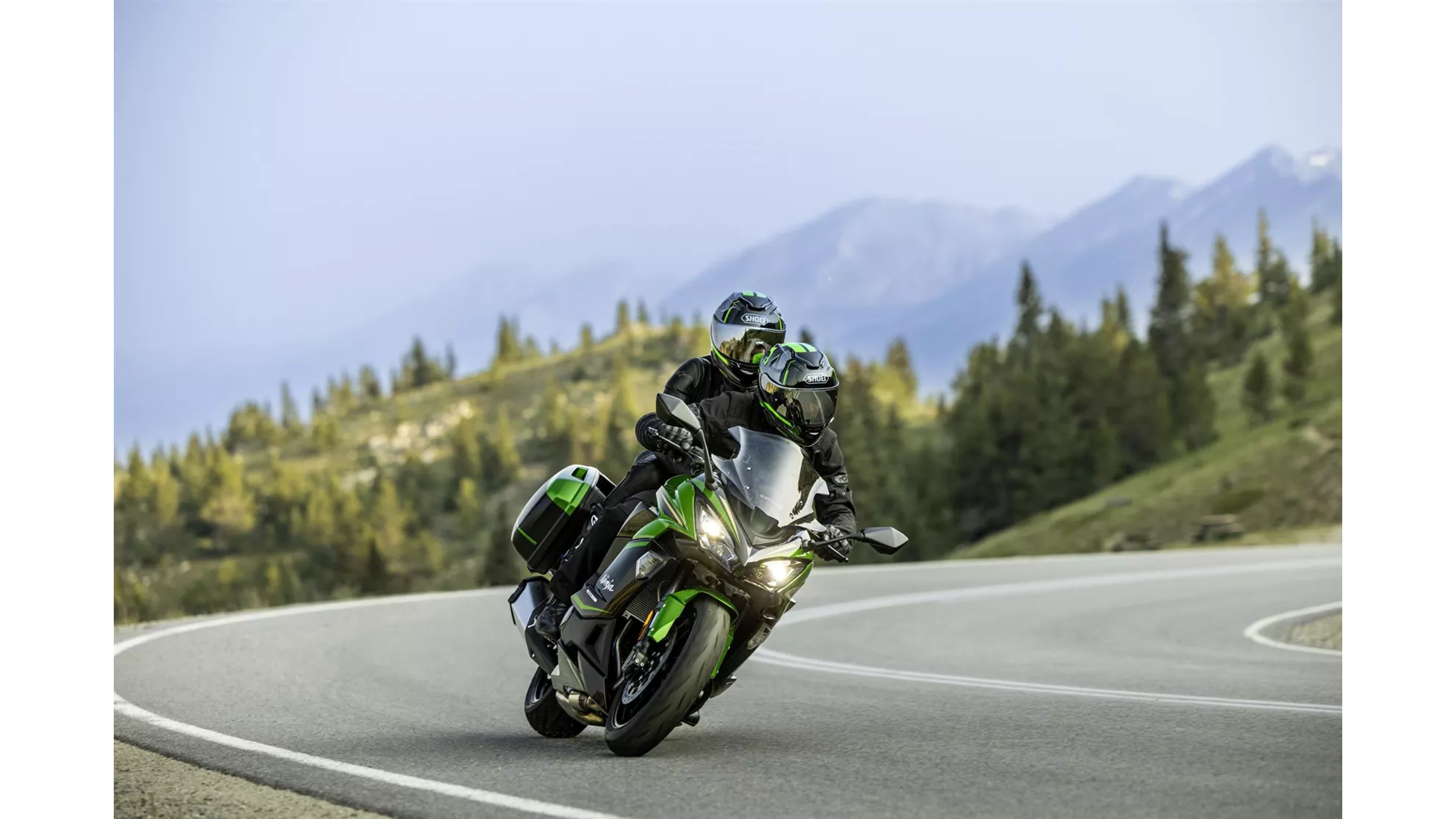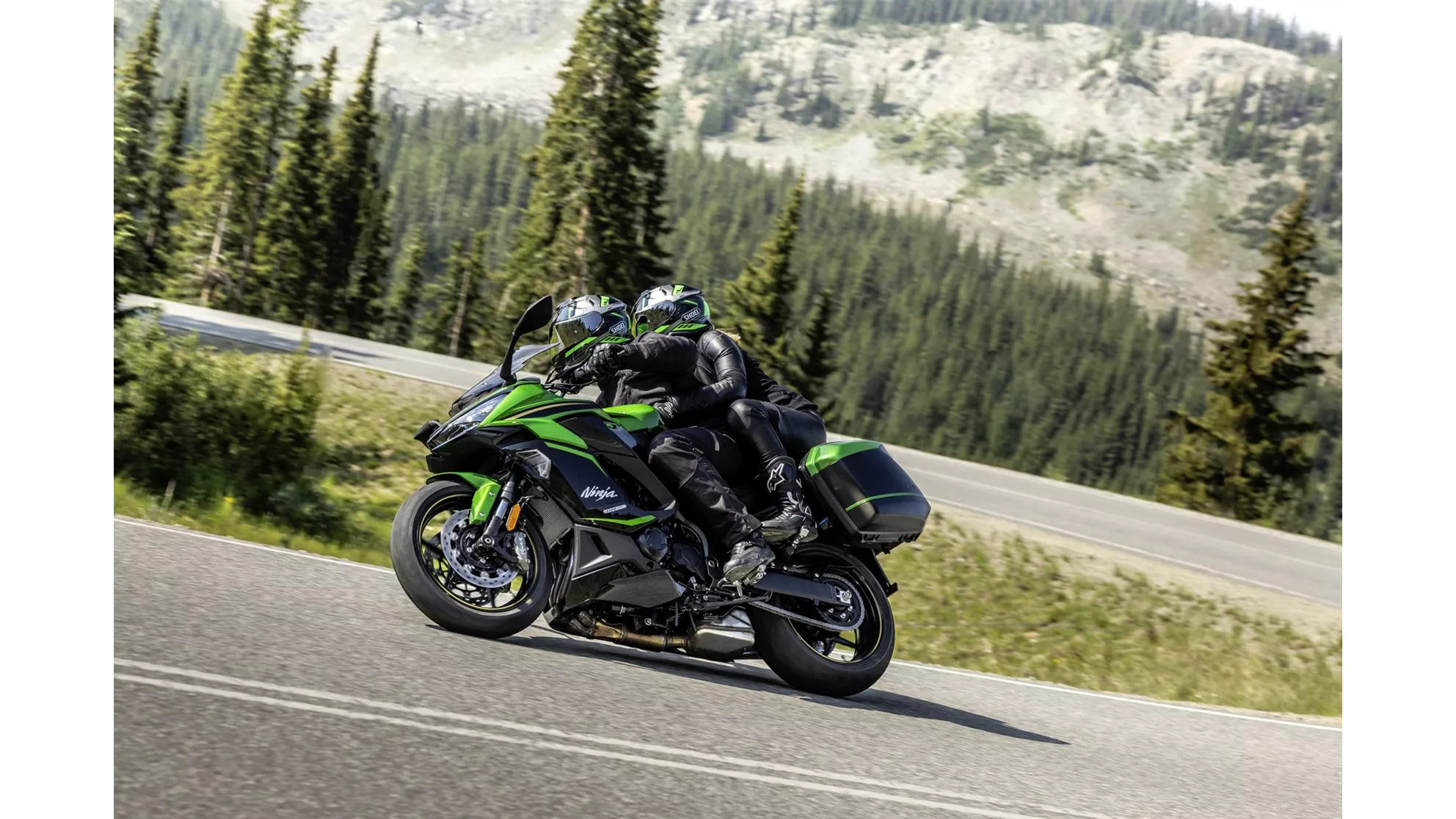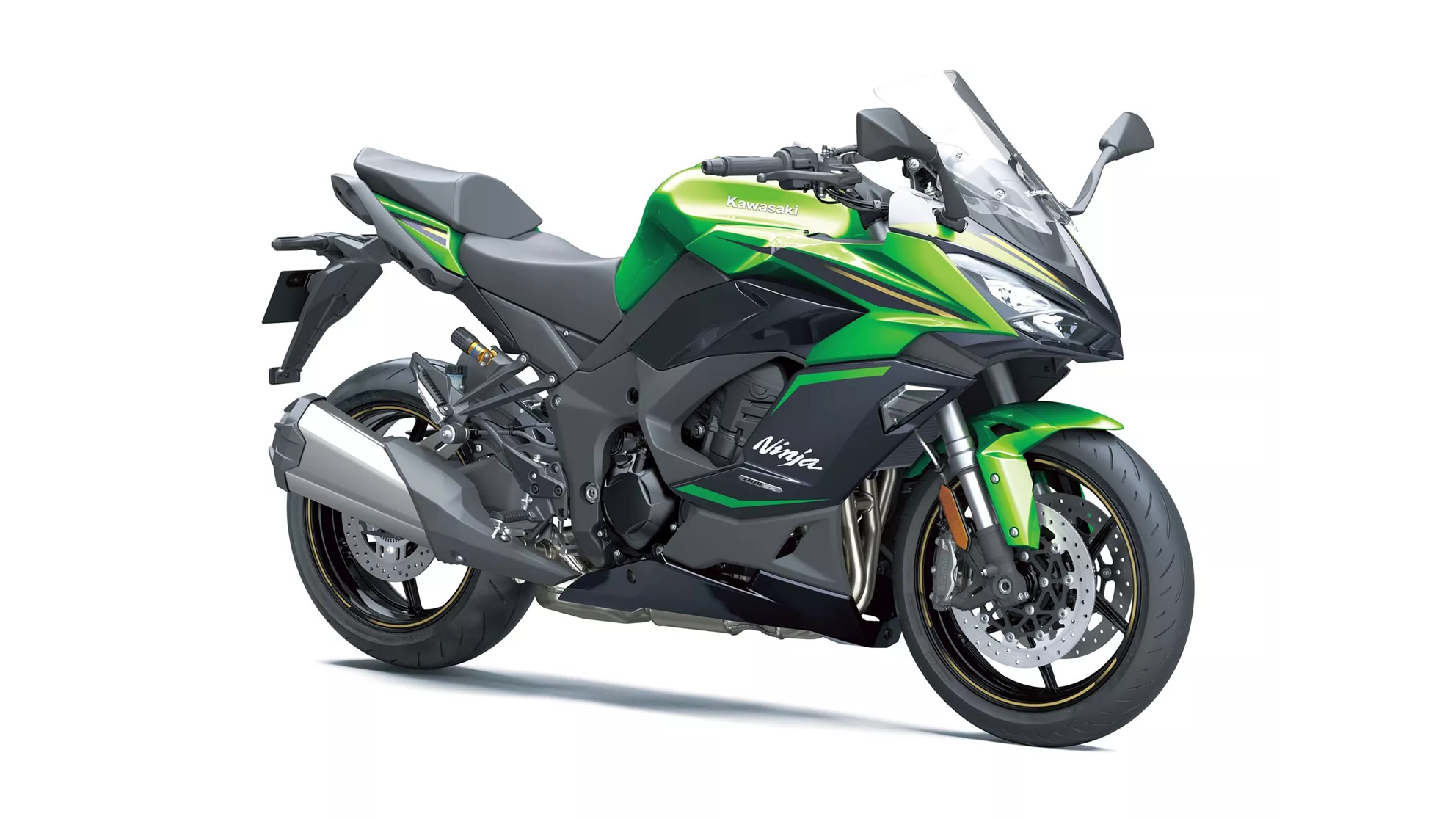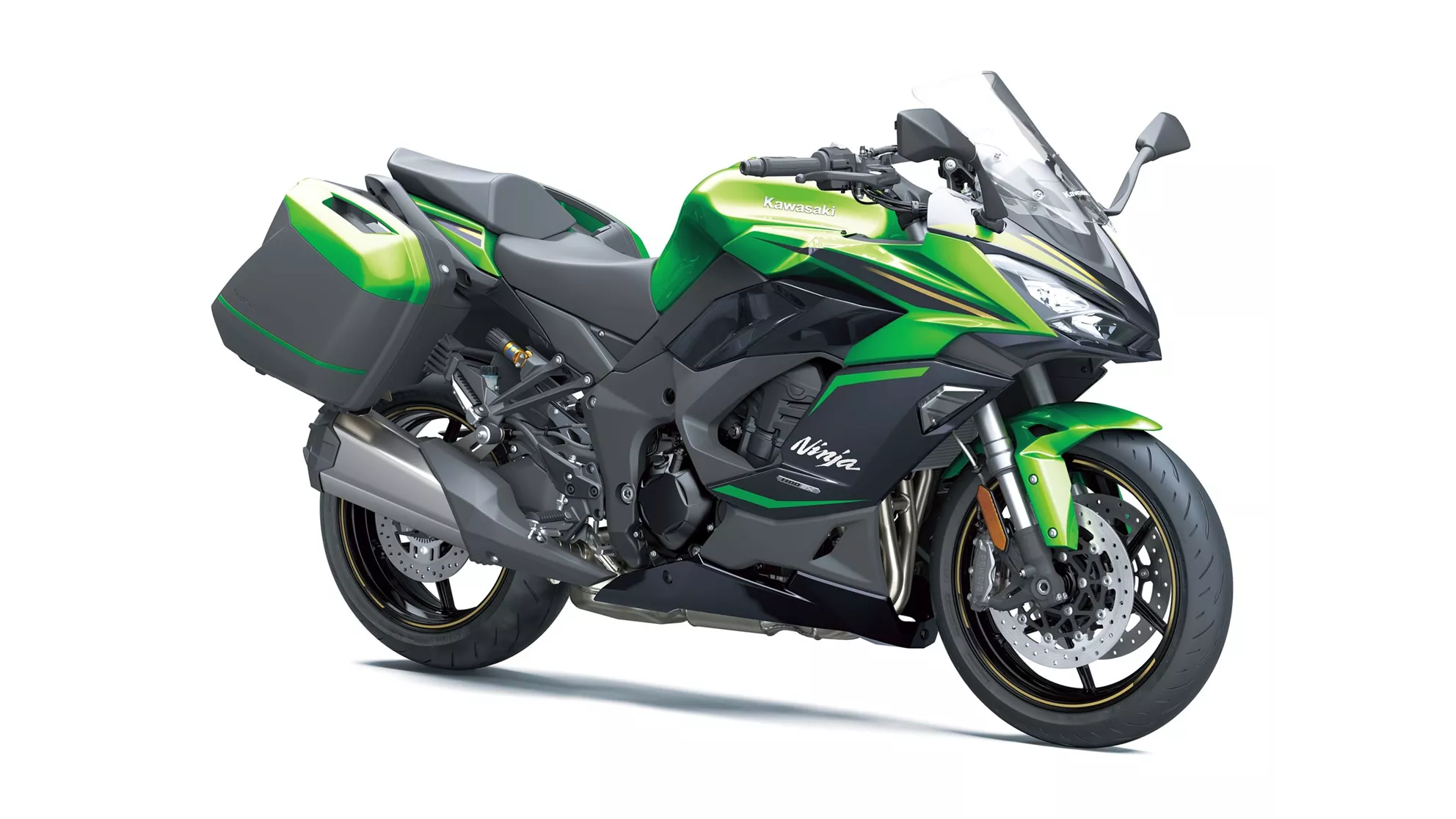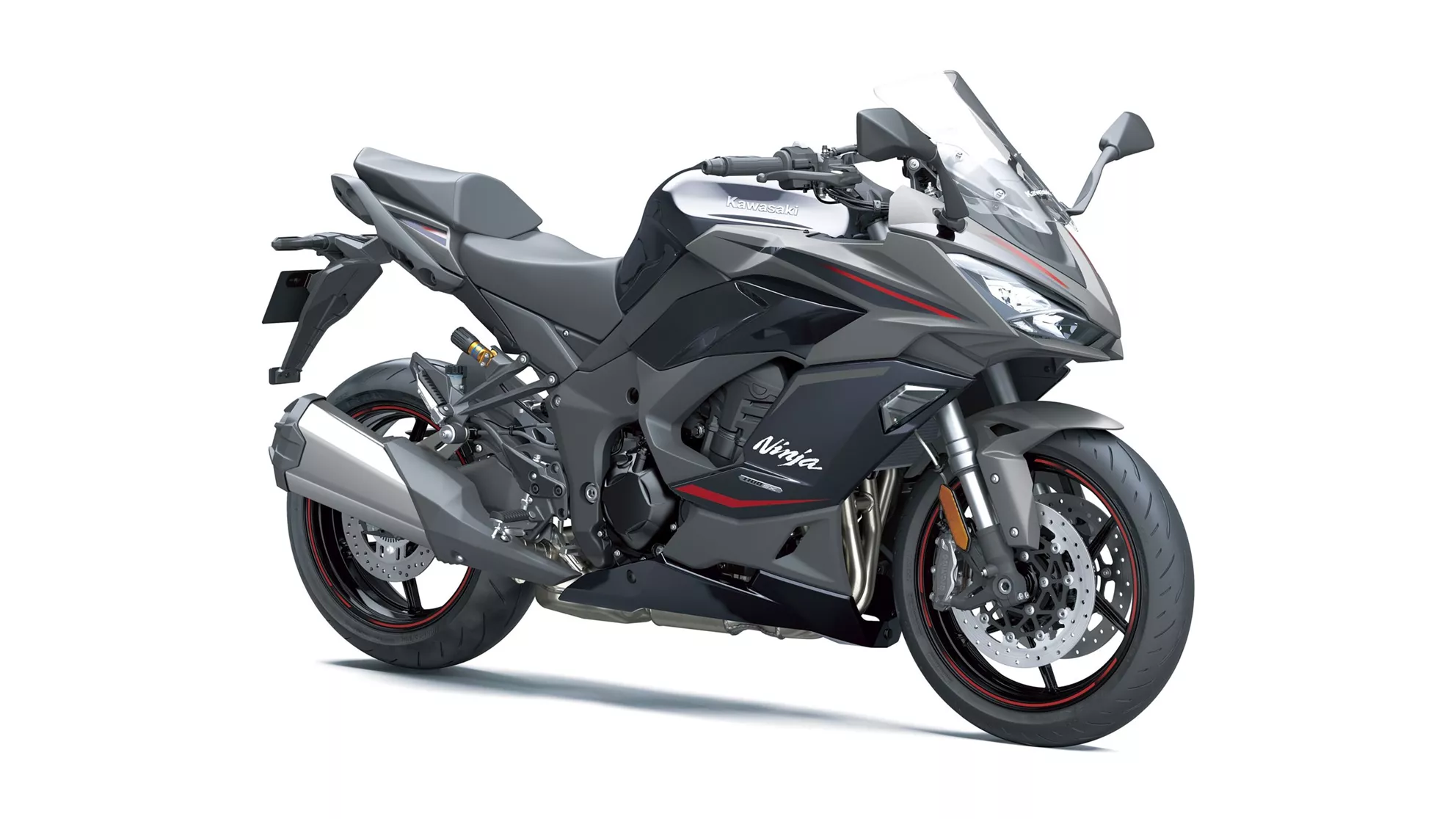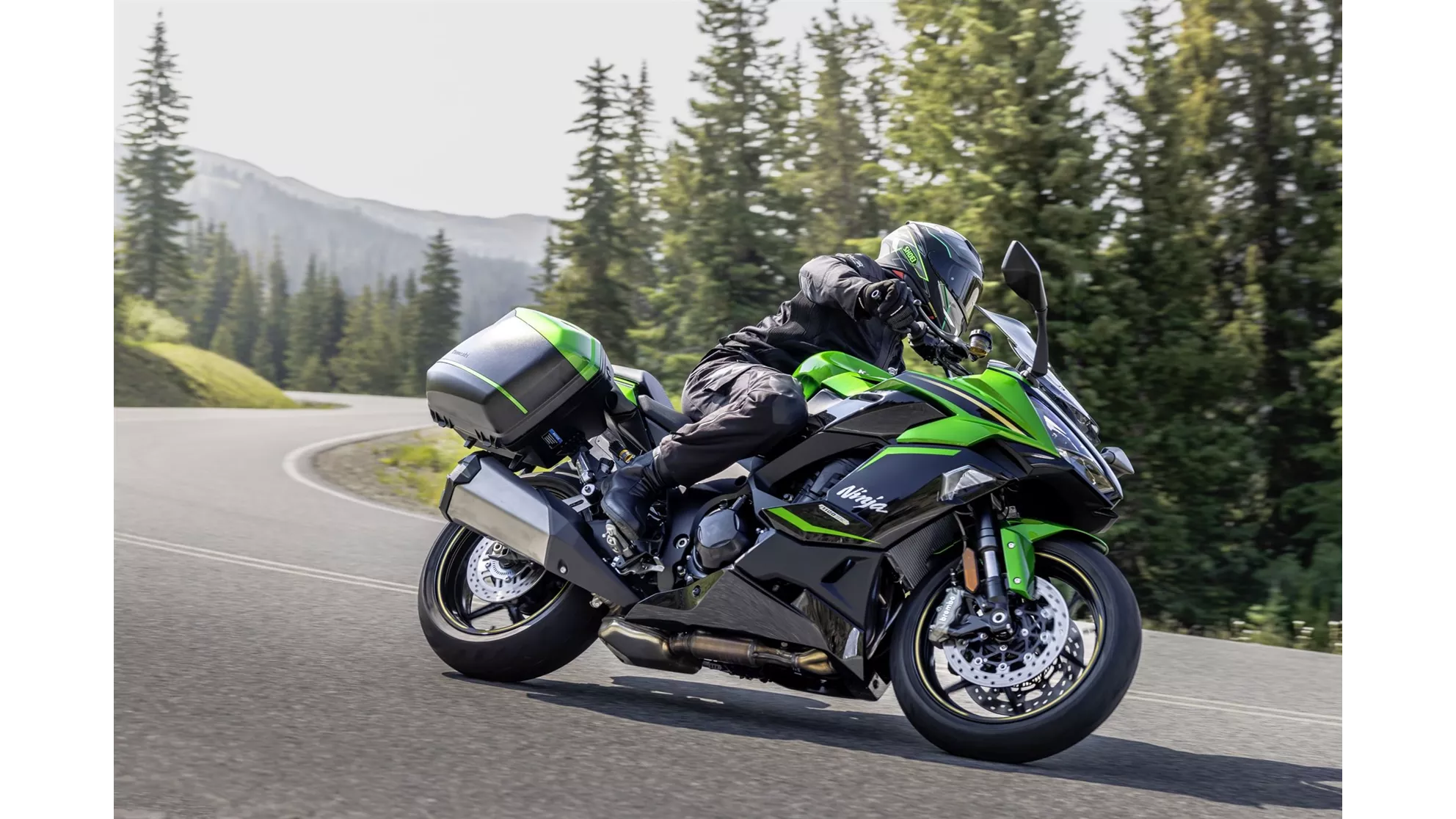The test ride for the new Kawasaki Ninja 1100SX SE (we exclusively rode the SE model) takes place in the spectacular surroundings north of the metropolis of Barcelona, Viladrau, in the Montseny Natural Park – a paradise for motorcyclists. This national park is known for its twisty mountain roads, steep climbs, and varied landscapes.
The test day itself was challenging in terms of weather but realistic: In the morning, there was dense fog, comparable in effect to drizzle, the roads were wet and slippery, and the dark visor of my HJC RPHA 71 Carbon didn't make things any easier. Temperatures in the early morning hours were around 2-5 degrees °C. Just in time for the photo and video point later in the morning, the sky cleared, providing better visibility and warmth. At least 14 °C showed on the Ninja's display. Such changing conditions provide an ideal testing ground for sport touring bikes like the Ninja 1100SX, which must impress not only on dry roads but also under adverse circumstances.

&width=72&height=72&bgcolor=rgba_39_42_44_0&mode=crop)
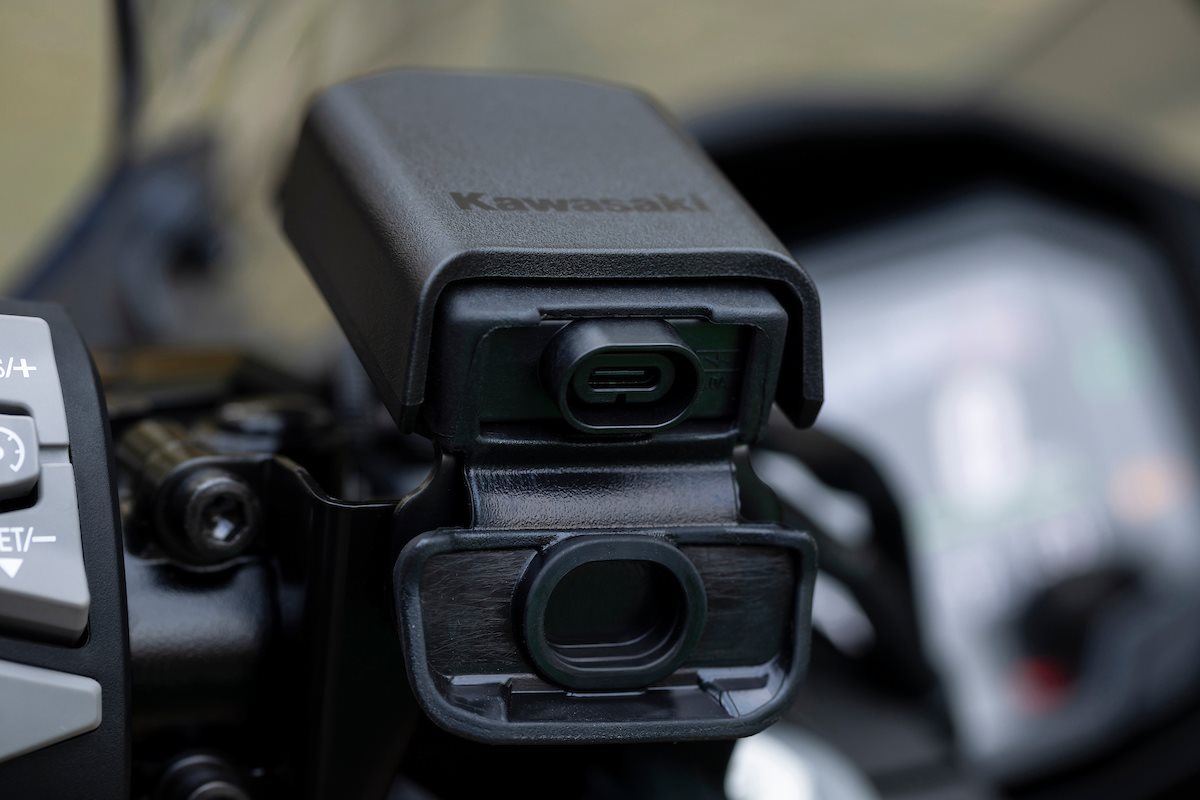
&width=60&height=60&bgcolor=rgba_39_42_44_0&mode=crop)
